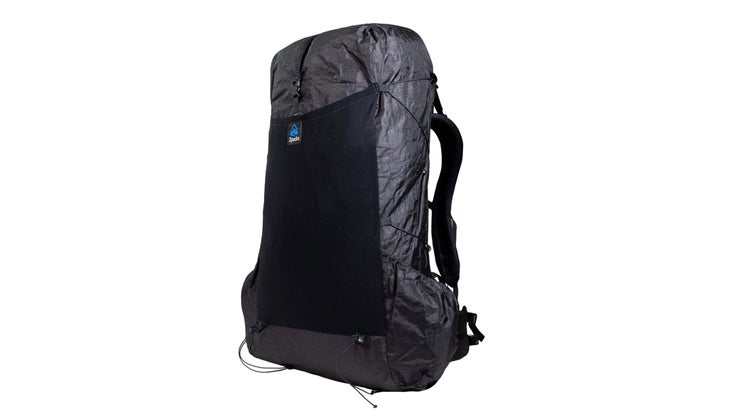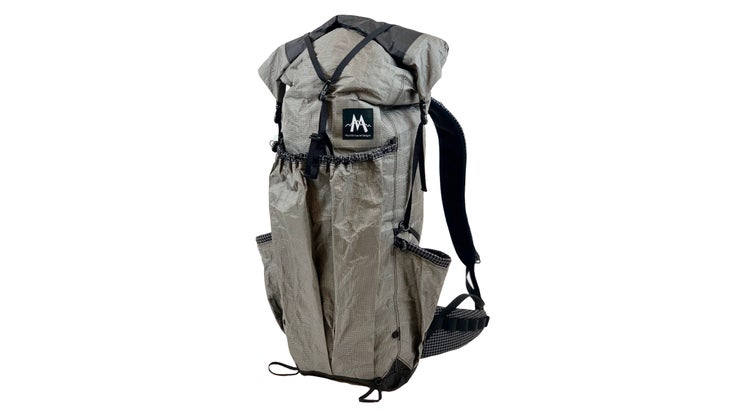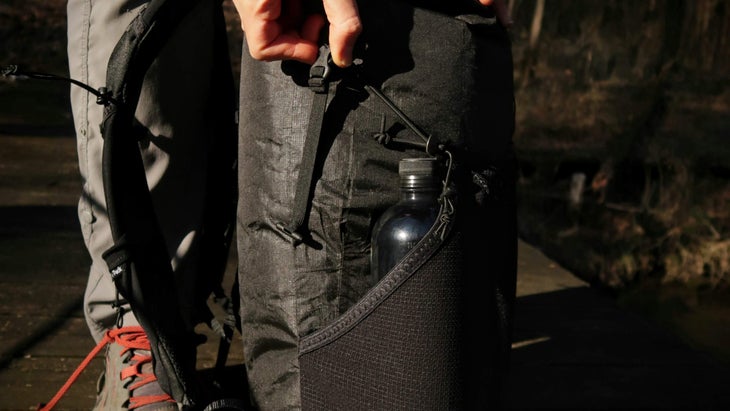Products You May Like
Get the latest from the lightweight backpacking world in our twice-monthly ultralight column.
If you follow the trends of the ultralight gear industry closely, you may have heard of a new fabric known alternatively as EPL Ultra, Ultra 200, or Ecopak Ultra. Across the cottage industry that produces ultralight hiking gear, Ultra—we’ll use that all-encompassing term here—is taking over. It’s the building block of Zpack’s newest pack, the Arc Haul, and has replaced Dyneema across Mountain Laurel Designs’ entire line of backpacks. So what is this novel material, exactly, and where did it come from?
Like Dyneema, X-Pac, and other fabrics found in premium ultralight gear, Ultra comes from the world of sailcloth. It’s the brainchild of Hale Walcoff, an American sailor and textiles developer. Ultra is produced exclusively by Challenge Outdoor, the company that Walcoff now manages.

Walcoff says that the technical properties of sailcloth translate to the world of ultralight design. “The stretch characteristics, tear strength, and firmness of sailcloth, at the lowest possible weight, is critical to maintaining the designed airfoil shape of a fast sail,” he says. “Similar fabric qualities are key to making light, comfortable, durable packs.”
In 2019, Walcoff began working on an idea that has captured the attention of many in the outdoor industry—how to create a technical fabric using all recycled materials. Working with Challenge Sailcloth, he sourced both a recycled film and a recycled polyester and began to develop new fabrics. His first product to catch on in the outdoor industry was Ecopak, a 100-percent recycled coated polyester that Walcoff likens to a recycled version of X-Pac. Ultra hit the market in 2021 and soon garnered praise for its strength and abrasion resistance.
In technical terms, Ultra shares a similar blueprint with its closest competitor, Dyneema Composite Fabric. Both are constructed of ultra-high-molecular-weight polyethylene (or UHMWPE), a unique plastic that is stronger than steel. Dyneema, however, uses UHMWPE in a non-woven form, laminated between two sheets of polyester. With Ultra, Walcoff chose to create a woven UHMWPE and polyester fabric, laminated with a recycled RUV film. According to Walcoff’s test results, Ultra has about three times the tear strength of Dyneema, and seven times greater abrasion resistance. It bests X-Pac by even greater margins.

Ultra’s unique construction does have its limitations. Unlike Challenge Outdoor’s Ecopak fabric, it’s not fully recycled, since it utilizes new UHMWPE. It’s also every bit as expensive as Dyneema: The most popular weight for pack-making, Ultra 200, costs about $35 per yard. (Like X-Pac, Ecopak is considerably cheaper at $13 per yard). And while it bests Dyneema in strength, it falls short in other ways. The lightest version of the fabric, Ultra 100, clocks in at 2.9 ounces per square yard, a far cry from the 0.51- or 0.34-ounce per square yard weights that Dyneema can achieve. In practice, this means that Ultra is a great option for backpacks, but is too heavy to be used in lightweight tarps and tents. (Walcoff is developing a 1.2-ounce fabric called Ultra TNT, but because of its higher weight, he predicts that it will be a budget-friendly alternative to nylon or polyester tents, rather than a competitor to ultralight Dyneema shelters).
Ultra’s release last year also came as cottage manufacturers faced short supplies of Dyneema. DSM, the company that produces Dyneema, has acknowledged those supply issues and said it’s ramping up production capabilities to meet demand. But for some brands that have switched to Ultra as a result, there are no plans to return to Dyneema.
For its latest line of packs, Mountain Laurel Designs has fully embraced Ultra, writing on its website that “the high recycled content and expected extra-long service life of Ecopak Ultra 200/400 makes an excellent case for being one of the most advanced eco-friendly ultra-light backpack fabrics available.” Though the company still offers Dyneema tents and tarps, and offers a Dyneema-branded ripstop nylon as a budget pack material, their premium packs are now all made with Ultra.

For other cottage makers, knowledgeable customers are another motivation to test out new fabrics. “We serve a niche of a niche, which can make our customers very devoted,” says Levi Morton, co-founder of Nashville Pack. “We’ll get a dozen emails when a fabric like Ultra comes out, asking us, ‘When are you going to start using this?’” This year, Nashville is offering its flagship Cutaway pack in Ultra, as well as two new versions of X-Pac known as LSO7 and VX07.
For his part, Walcoff has embraced the ultralight industry as quickly as it embraced his sailcloth. “The favorite part of my job is to meet with small brands and start-ups in their garage or basement, get feedback on our current styles, and listen to their ideas for new colors and weaves,” he says. Ultra has plenty of wind in its sails, which might be a big win for fastpackers everywhere.
